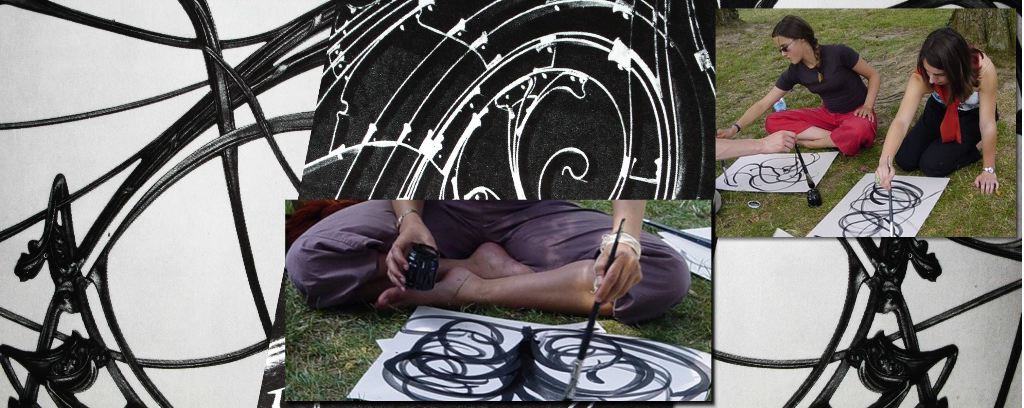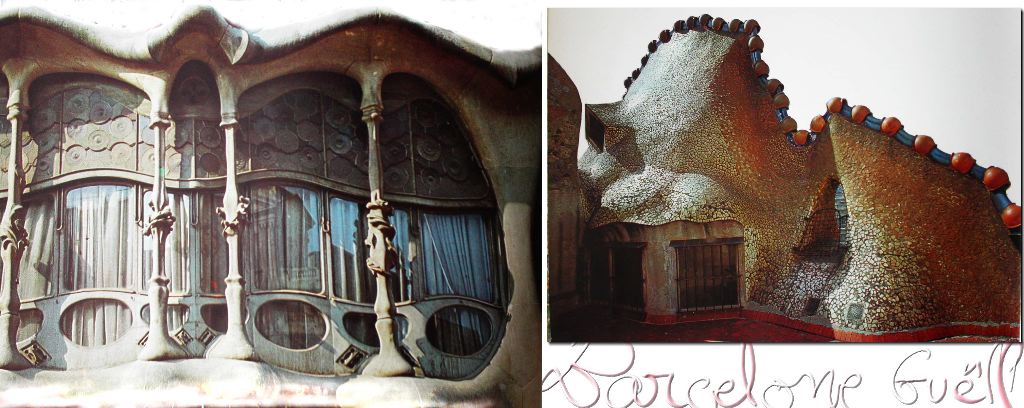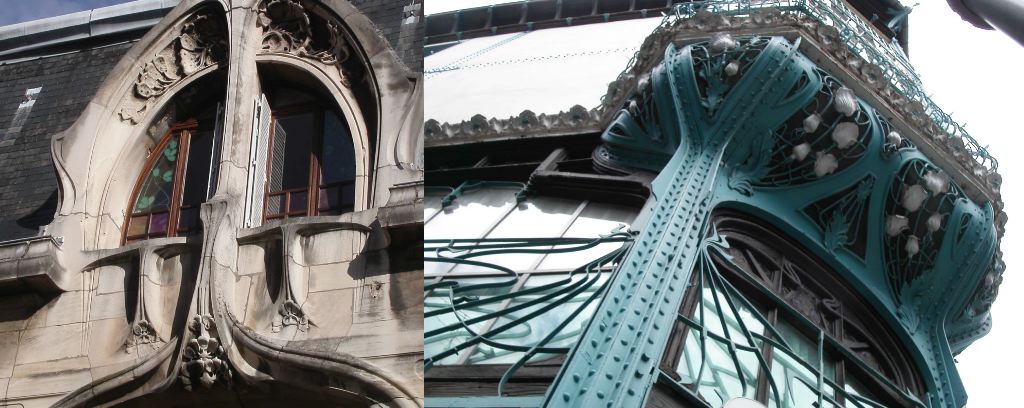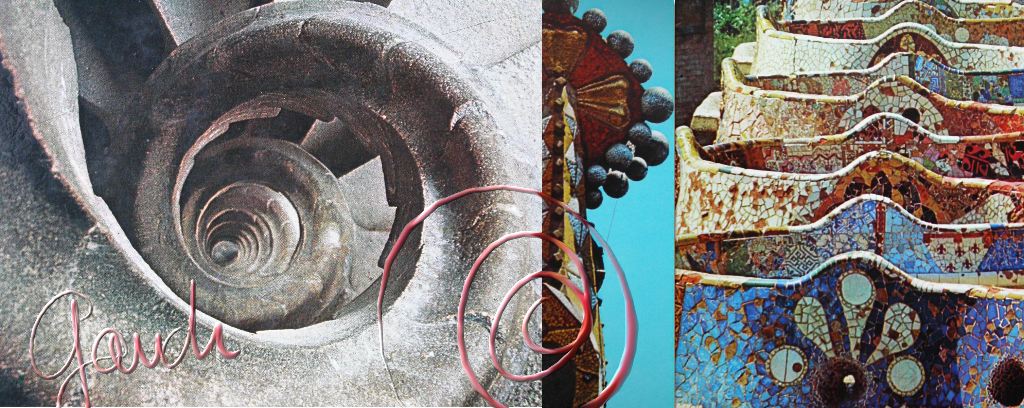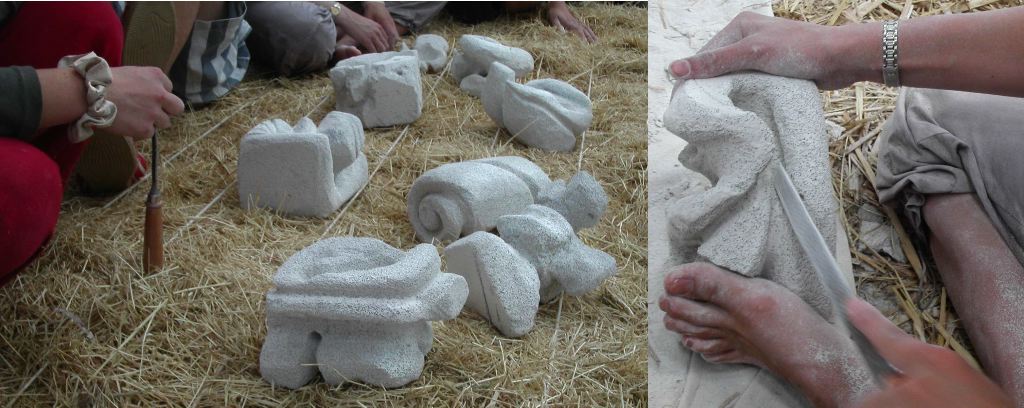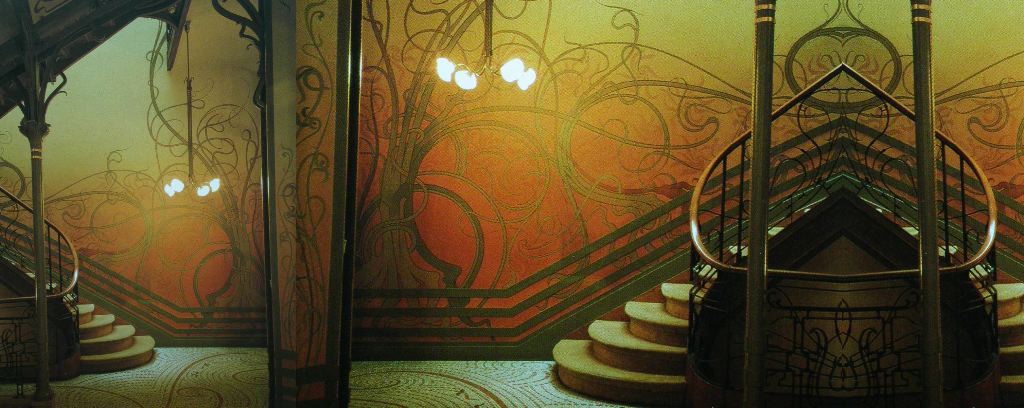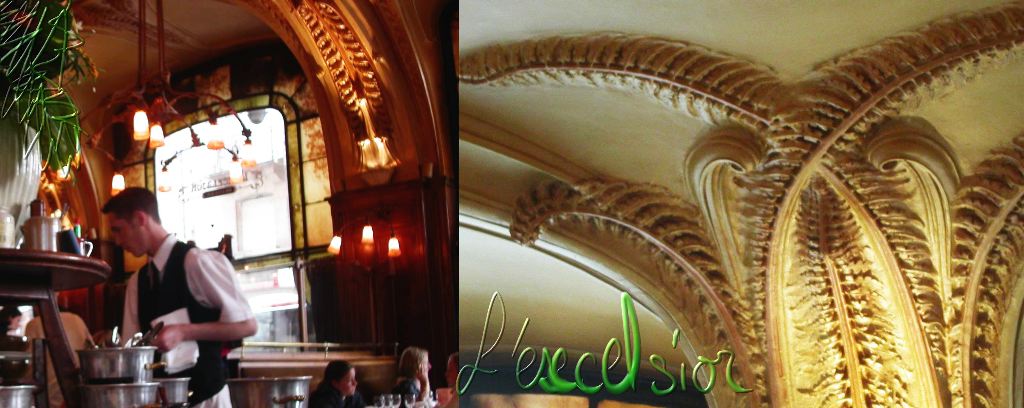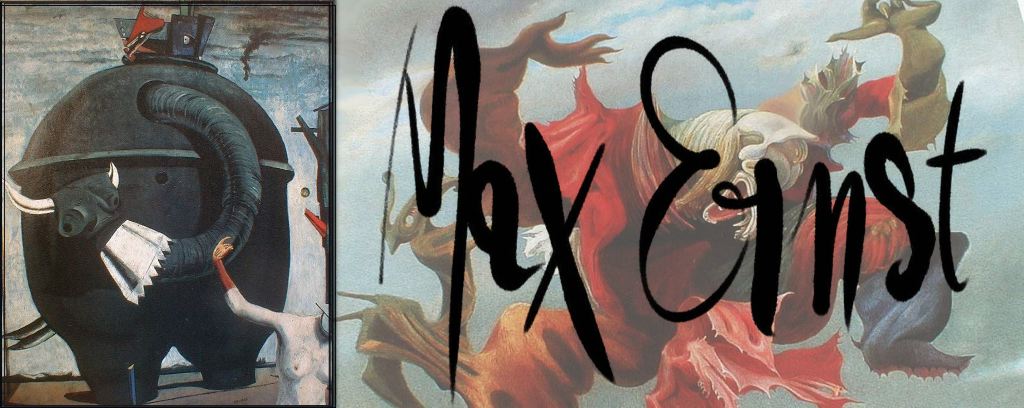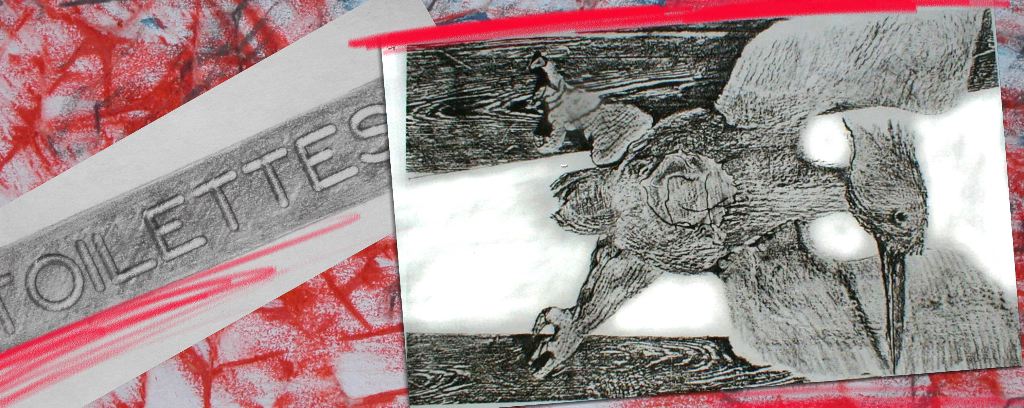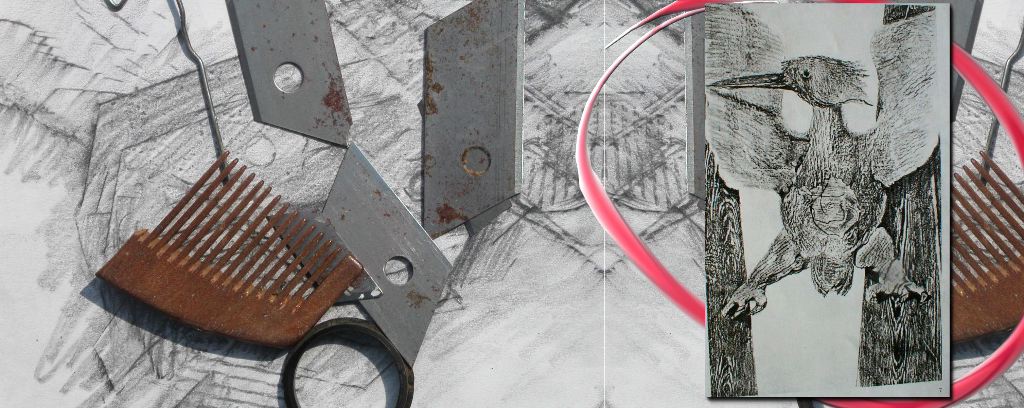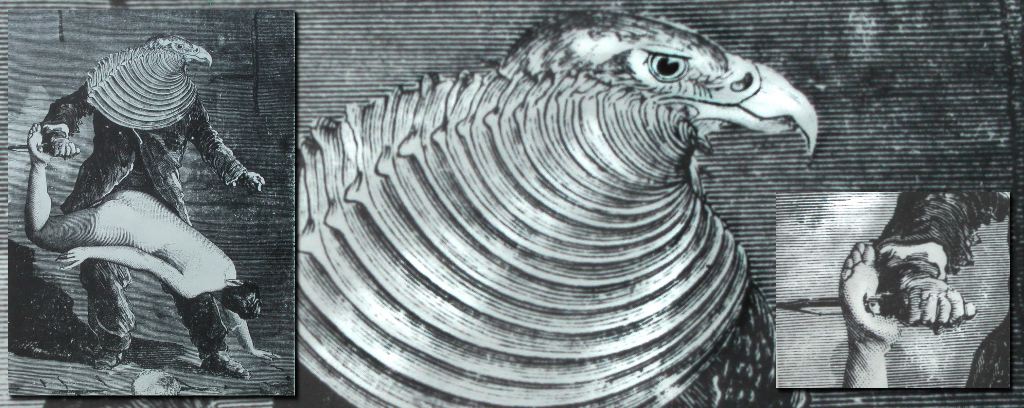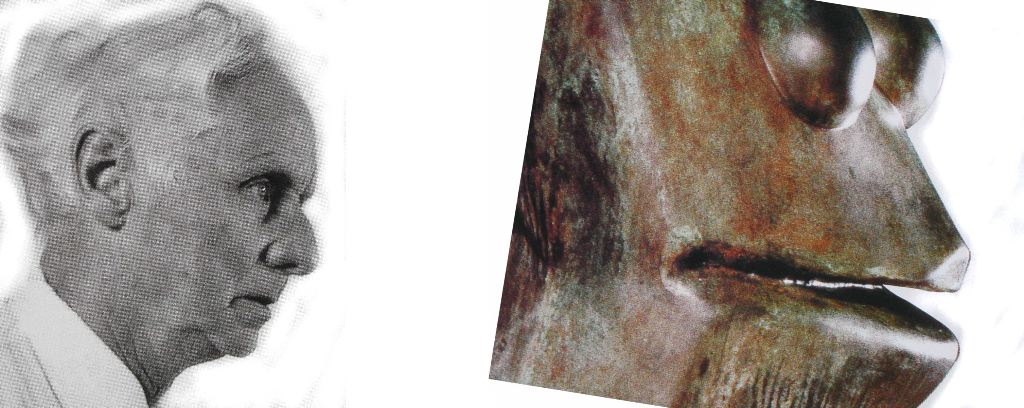Renaissance/ Perspective

In the word "Renaissance", there is "naissance" (birth) and "Re", same "Re" as in "rediscover", "remake". The entire word means, that there was indeed a birth, but also that everything had to be "rebuild".
1 - It is in Italy that there was the "naissance" with the Romans about years zero, and even before, with the Greeks.
2 - And, it is in Italy that it is "rebuilding" in the years 1400; it is the Renaissance.
The Italians call this time the "Quattrocento"; the years 1400. In French, one says: the "fifteenth century" (Quinzième siècle). XVth century begins in 1400 and finishes almost in 1500. It is quite complicated!
For us, it was 600 years ago.
Six hundred winters passed.
(Draw a line on the blackboard, and place some dates on the scale.)
In the Quattrocento Italians discover that the Romans and the Greeks knew how to do everything before them and that they should take up their ideas, therefore, "to relearn" what was forgotten, in the course of centuries, along the way…
It is by excavating the ground of Rome and by reading again the old Greek and Romans books (which had more than 1500 years! Thus of a time way before Jesus-Christ)… that the Italians discover their ancestors already knew many things. This had been forgotten before the Middle Ages. It was necessary to rediscover everything.
Before Renaissance it was the Middle Ages, which wasn't "Average", it was rather "Gothic", we will speak about it another time. But before Middle Ages, it was really average.
Without entering too much into medieval history, it should be said that at that time, the faith in God was spectacular, as impressive as it is currently on TV when one looks at a ceremony in Lourdes, Mecca, or in the River Ganges.
In the years 1400 (in the Quattrocento), loving God is very serious, but Man also starts to like himself, as a consequence he may even neglect God.
The Renaissance man finds that the bodies of men, women and children are beautiful with their muscles, their curves, their sparkling eyes and their beautiful clothing.
It is the painters and sculptors who will show the beauty of the bodies to everyone and it is thanks to them that today we have traces of life at this time, as painting was well preserved, and the stone sculptures are in good condition.
It is necessary to go to the Louvre Museum to see all these works; the French brought so much back from Italy by paying them or by not paying them at all.
But of course, there are even more paintings and sculptures of the Renaissance in Italy, in Florence, in Venice, in Rome, and in a lot of other cities… At this time the whole load of artists in each city was incredible! … A little bit like the footballers of our time.
Certain painters were famous, one knows Zidane, Michel-Angel and Léonard de Vinci, but there are many others of it…, hundreds.)
The "Italian Renaissance" is not only a story of paintings and sculptures; it is also a new departure in architecture, cinema, literature, poetry, sciences, everything.
(… For Zidane and the cinema it is a joke, an anachronism; it will be necessary to wait five more centuries, 500 summer holidays, before seeing Charlie Chaplin and Mickey Mouse on the walls and Zidane in a stadium.)
Images of the MIDDLE AGES.
Before 1400, (a little before Renaissance) there was neither TV, neither cinema, nor photographs on the walls, only the painting which is surprising for us today.
Here are three surprises:
1 - The skies are in gold.
2 - The heads of the important characters are surrounded by a plate in sheet gold which is expensive.
Thus the sky is not sky blue as we know it is actually, but it is "gold" color; it is not our planet's sky, and the people living there are from another world.
3 - Third surprise, these people can have wings, they are really not from here - they are from planet Heaven … nobody ever return from there to know how it was. The painters they make as if they had been there. In fact they paint what the Pope asks them and as they have a lot of imagination, they imagine well; they paint the blue, red and yellow angels. They pile them up the ones on the others as parrots on a telegraph wire which would like all to be on the same photograph around an important man.
With the Renaissance, after the 1425 (with Masaccio) sky becomes sky blue, but it has been done gradually.
It is not in a day that the painters told themselves:
"Starting from now we will paint the sky sky blue … Or gray if the weather is gray… It will never be again "gold" color as it is never in "gold" on earth. With gold, one will be made jewels! "
But, these small changes are still little things; the Renaissance it is much more powerful than that, it is much better than to pass from gold to blue, they will invent the "perspective", it is difficult to draw, but it is great!
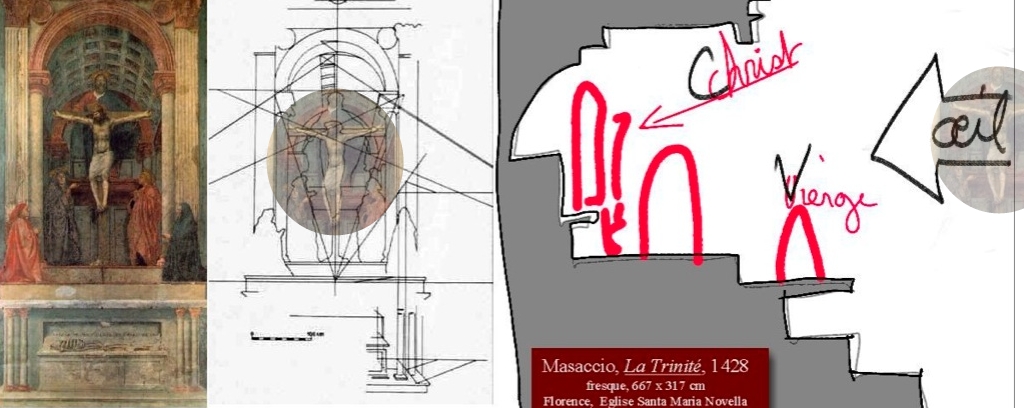 In the Middle Ages when one was looking at a scene painted on a wall in a church, one easily saw that it was a hard wall: Tonk! Tonk!
Nobody was saying: "Wait! There are already twelve people in this room who are eating everything, if I do not hurry joining there table, I won't have anything but the crumbs. "
They rather said: "these twelve fellows make me think of the apostles who ate with Jesus, I respect them."
They did not even think that they were all flattened like crepes on the wall. Visitors of the church were not going to knock themselves against the wall by wanting to settle at the table, they did not even believe it a second, but it made them think about Jesus, about the Christ (Jesus or Christ, it is the same man.)
And, as they were strong believers they were thirteen zémus when they think of him.
"What if one did not believe?"
At that time it was impossible to imagine that one can not believe in a God.
In our time, one can embrace all kinds of Gods, one can even not believe in anyone, without knowing the story of Jesus, the one of Allah or Buddha, etc. As a result it's even more confusing. One should learn a little something about all these religions!
When one knows nothing about it, one wonders what are twelve fellows joined together around a table doing. One cannot guess that it is Jesus' gang, one can only say:
"Are they preparing some kind of shady business?"
Before, during and after the Renaissance, painters continue to tell:
1 - Stories about Jesus, about his mother Marie, his friends the Apostles, who live beyond the sky (in the cloudy Paradise or the Purgatory, the waiting room).
2 - Stories about demons of the underground (the scary volcanic Hell) .
3 - But also stories about Zeus and its family which call the shots up there. Let's not speak about or it will complicate even more, nobody still believes in it, but they like it.
The themes of images do not change in Europe during almost 2000 years.
In the Middle Ages when one was looking at a scene painted on a wall in a church, one easily saw that it was a hard wall: Tonk! Tonk!
Nobody was saying: "Wait! There are already twelve people in this room who are eating everything, if I do not hurry joining there table, I won't have anything but the crumbs. "
They rather said: "these twelve fellows make me think of the apostles who ate with Jesus, I respect them."
They did not even think that they were all flattened like crepes on the wall. Visitors of the church were not going to knock themselves against the wall by wanting to settle at the table, they did not even believe it a second, but it made them think about Jesus, about the Christ (Jesus or Christ, it is the same man.)
And, as they were strong believers they were thirteen zémus when they think of him.
"What if one did not believe?"
At that time it was impossible to imagine that one can not believe in a God.
In our time, one can embrace all kinds of Gods, one can even not believe in anyone, without knowing the story of Jesus, the one of Allah or Buddha, etc. As a result it's even more confusing. One should learn a little something about all these religions!
When one knows nothing about it, one wonders what are twelve fellows joined together around a table doing. One cannot guess that it is Jesus' gang, one can only say:
"Are they preparing some kind of shady business?"
Before, during and after the Renaissance, painters continue to tell:
1 - Stories about Jesus, about his mother Marie, his friends the Apostles, who live beyond the sky (in the cloudy Paradise or the Purgatory, the waiting room).
2 - Stories about demons of the underground (the scary volcanic Hell) .
3 - But also stories about Zeus and its family which call the shots up there. Let's not speak about or it will complicate even more, nobody still believes in it, but they like it.
The themes of images do not change in Europe during almost 2000 years.
Images of the RENAISSANCE.
What changes with the Renaissance, compared with the Middle Ages, is that the Saints do not float in space anymore as if they were in the air (like in a state of weightlessness); they are often posed on a cold tiling ground flanked of well arranged columns on the sides. They have a shadow at their feet; they give the impression to be real men with beautiful aureoles around the head, worn like Chinese hats. It is obvious that the characters are heavy like good-natured people made of flesh and bones; they do not give anymore the impression to be cut out of paperboard.
Nevertheless, when one looks closer, one thinks the characters do not have anything in common, one would believe that they don't see each others, they ignore themselves; one could change their place, that would give the same result…, like the pieces of a chest game.
At the beginning of the Renaissance, if one is observing well, one can find the same important character two or three times in the same image.
The painter was making a comic strip without separating vignettes like today. When vignettes are not separated, it is necessary to know the story before in order to follow it! Otherwise one will believe there are twins or triplets in the story, (Saint Peter is present three times in "The Tribute Money" of Masaccio).
Today, only few people know the History of the Saints and of Jesus, therefore one can only guess the most famous stories. But most of the time, one mixes it all up, putting off looking at images of this time.
Let's try to look at a well known painting:
An ANNUNCIATION.
 You see a beautiful angel all dressed up with splendid wings who makes funny hand signs to a girl occupied pretending to read. Above the girl a fluttering dove seems to go down from the sky with a gold line.
Investigation report: it is a messenger of the sky coming to announce Marie that she will have a son that she will call Jesus.
This story has been painted hundreds of times!
Let's continue the investigation.
Marie is not really happy, she never hits to the roof, she is a girl like the others, but she is O.K to be the Mom of her extremely famous son, she inclines the head and lowers the eyes.
So far on can understand everything, but still! It is not really common that a messenger of the sky lands to announce the birth of a Saviour. Yes it is!
Well, with Cinderella, Harry Potter, the Star Wars, one sees much more complicated things.
Where it is getting confusing in this history of the young Marie, it is when in front of the door of her room, one finds a "marrow" and an "apple". Is it is difficult to understand why it is there?
You see a beautiful angel all dressed up with splendid wings who makes funny hand signs to a girl occupied pretending to read. Above the girl a fluttering dove seems to go down from the sky with a gold line.
Investigation report: it is a messenger of the sky coming to announce Marie that she will have a son that she will call Jesus.
This story has been painted hundreds of times!
Let's continue the investigation.
Marie is not really happy, she never hits to the roof, she is a girl like the others, but she is O.K to be the Mom of her extremely famous son, she inclines the head and lowers the eyes.
So far on can understand everything, but still! It is not really common that a messenger of the sky lands to announce the birth of a Saviour. Yes it is!
Well, with Cinderella, Harry Potter, the Star Wars, one sees much more complicated things.
Where it is getting confusing in this history of the young Marie, it is when in front of the door of her room, one finds a "marrow" and an "apple". Is it is difficult to understand why it is there?
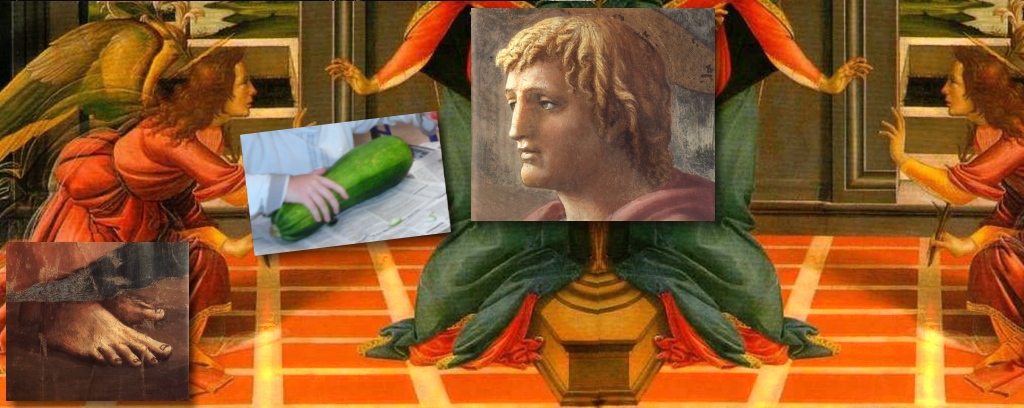 Yet it is simpler to admit spotting an apple and a marrow on the threshold of a door than an angel with multicolored wings hanging around in front of this door!
Isn't it?
At that time they knew it all why all that (the angel, the marrow and the apple) was in front of the door,
One knows Eve's apple which explains the sin (the first disobedience of men).
"… But for the marrow? " questions the detective.
Perhaps there will be details of our time that our descendants will not understand any more.
"road traffic signs"
"So the marrow? "
"the marrow, is to say that the Christ did not really die on the cross even after the spear jab he received deep in his heart. This vegetable placed in front of the door express that Jesus will rise from the dead even so he was not born yet. It is complex, but exact. "
We may stop the investigation…
Yet it is simpler to admit spotting an apple and a marrow on the threshold of a door than an angel with multicolored wings hanging around in front of this door!
Isn't it?
At that time they knew it all why all that (the angel, the marrow and the apple) was in front of the door,
One knows Eve's apple which explains the sin (the first disobedience of men).
"… But for the marrow? " questions the detective.
Perhaps there will be details of our time that our descendants will not understand any more.
"road traffic signs"
"So the marrow? "
"the marrow, is to say that the Christ did not really die on the cross even after the spear jab he received deep in his heart. This vegetable placed in front of the door express that Jesus will rise from the dead even so he was not born yet. It is complex, but exact. "
We may stop the investigation…
... and speak about the RENAISSANCE.
The artists of the Renaissance wondered whether geometry could help them to understand how to paint a real house, for example the one of Marie - how to draw it in volume on a flat paper.
Is it that simple to draw a house which does not give the impression to be askew as with the one of the Middle Ages?
It is much easier to build it with stones than to draw it on a paper sheet!
Masons know how to build them in stone for a long time, but painters achieved it only at Renaissance.
One could believe that it is not hard to flatten a house on the paper sheet: it is the case today, but it is because the men of the Renaissance succeeded in calculating it, since we just do like them.
Let us look at the paperboard box of a television set and let us try to draw it.
Try it!
It is not easy…
Even with a ruler, there are incorrect lines.
There are mathematical laws; it is the Italian Alberti who gradually wrote the book which helped the painters, but that was not easy, the Greeks and the Romans never succeeded, they mixed up all, they racked their brain over it.
1 - However, some painters thought the problem was too irritating and prevented them from painting religiously, so they continued to flatten everything like in the Middle Ages. (Fra Angelico.)
2- On the contrary other painters did not sleep about it and tried to draw correctly with this very complicated system of rule, square, and compass. (Piero della Francesca.)

This system is called: THE PERSPECTIVE.
The word can raise fear.
In Latin the word is less scary, it means: "to see through."
But, it is rather "to see on paper", therefore, "seeing reality on paper".
Perspective it is the way of drawing a true object (in volume) on paper (which is flat); the object appears deformed.
Painters of Renaissance are geometry maniacs.
They do not want to draw a guitar like Picasso, who is drawing it too quickly in spare parts over the table.
But Picasso is not here yet! … In five centuries only… So let's forget him.
Well, but as we are at the end of the time scale, we can know and mix up everything, and understand noting about the problems of a Renaissance painter, who was working up to draw a guitar (lute) with a compass and a set square.
Let's look at a painter at work:
He poses a lute on a table then he closes the door and he observes it by the keyhole with only one eye.
One should not look with two eyes - it is a lucky find of the Renaissance; the painter decides his eye will be the one of the Cyclops; it is what happens when one looks in today's camera. To draw, two eyes are useless, it should be decided which one to choose, that depends if one is left or right-handed (Determining your Dominant Eye).
The painter observes the musical instrument by the keyhole, but he sees only one side, he does not see it entirely, that's normal. He cannot change his place since he is behind the door.
He tries to draw it such as he sees it, it is difficult.
He tries to draw it "such as he sees it" and not "such as he remembers it", he is not Picasso who had fun when he was drawing.
The lute is to be drawn methodically, not really fun. The Renaissance Painter needs a plumbline and a spirit level to draw what he's looking at.
The painter forgot to close the window!
By the small keyhole, it sees the musical instrument on the table, it also sees through the open window behind the table. He sees a large tree in the distance…, which is very small, smaller than the lute which is close to him, on the table…, he wonders why, he's going gaga.
He wonders whether he is not dreaming:
"It is not a Bonzai, is it? "
So he draws the tree with the lute, but, on the drawing, one does not understand what they are doing together…
That's perspective: "it is to look through a small hole…, and to draw."
Everything is odd when one thinks about it and when one looks at it carefully. A rectangular window becomes trapezoidal, but the brain becomes use to it, it often does not even point it out to us.
The painter, who draws, tries not to get trapped by his brain which corrects everything quite naturally.
When he finished his painting, and he returns to his true life, his eyes slacken: Very small people are not Lilliputians anymore; they are normal people who walk in the distance.
Let us make a paper sheet magic.
Take an A4 white sheet.
Ask yourself: "Can my room be on it?"
Turn it in all directions.
Look at a photograph of your room. It is indeed your room, but you cannot sleep inside!
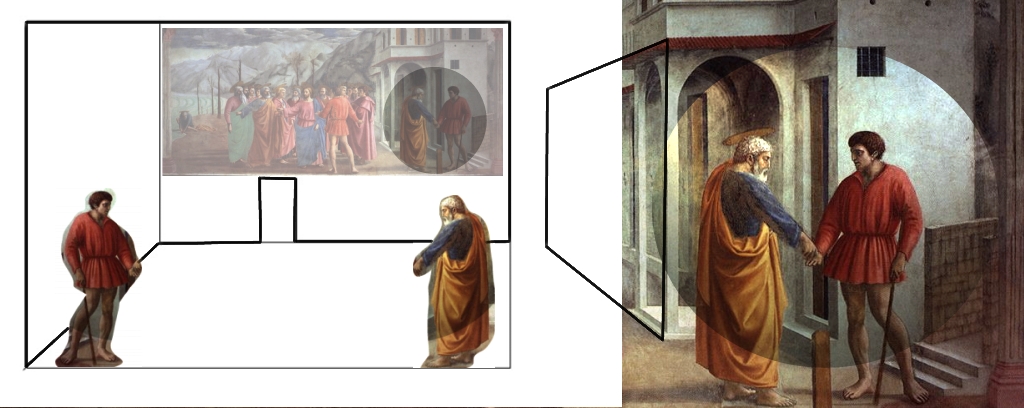 One believes in photography, this small piece of paper makes you think of your room, you see a bed. You remember it is comfortable.
A paper sheet can become magic if one draws his room on it.
Draw three lines with the pencil (or look at the attached sketch):
- First line; trace a vertical which start from the top without pressing on (at the third from the left.)
- Second line; trace a horizontal (at the third from the right side starting from the bottom).
Note that the two lines cross each other; erase the two ends of line in the bottom left, a rectangle remains.
- Third line; draw the oblique which joint the bottom left corner of your sheet with the junction point of the horizontal and the vertical.
Magic! You have just drawn the interior of a room. Large or a small room, it is as you want, it depends on the size of the door you will draw there.
This is perspective!
You have the illusion that your paper sheet is not any more flat like a carpet, but that it can contain objects, pieces of furniture.
To make it even better, you can color the left side in dark gray and bottom in clear gray.
Don't try to make tilings, you will fail! But you can learn how to do it by looking at a perspective book that speaks about it.
One believes in photography, this small piece of paper makes you think of your room, you see a bed. You remember it is comfortable.
A paper sheet can become magic if one draws his room on it.
Draw three lines with the pencil (or look at the attached sketch):
- First line; trace a vertical which start from the top without pressing on (at the third from the left.)
- Second line; trace a horizontal (at the third from the right side starting from the bottom).
Note that the two lines cross each other; erase the two ends of line in the bottom left, a rectangle remains.
- Third line; draw the oblique which joint the bottom left corner of your sheet with the junction point of the horizontal and the vertical.
Magic! You have just drawn the interior of a room. Large or a small room, it is as you want, it depends on the size of the door you will draw there.
This is perspective!
You have the illusion that your paper sheet is not any more flat like a carpet, but that it can contain objects, pieces of furniture.
To make it even better, you can color the left side in dark gray and bottom in clear gray.
Don't try to make tilings, you will fail! But you can learn how to do it by looking at a perspective book that speaks about it.
|
|
|
To test some more small things.
Inside this room, install a rectangular poster on the opposite wall: draw a rectangle.
Then draw a poster on the left wall; the rectangle becomes deformed, you will have to draw a parallelogram.
If you install a carpet on the ground, you will also have to draw a parallelogram; even so one knows very well that a carpet is rectangular!
Install the large television box well blocked in the bottom corner.
You should have only three types of line; the horizontal ones, verticals and 45 degrees lines.

